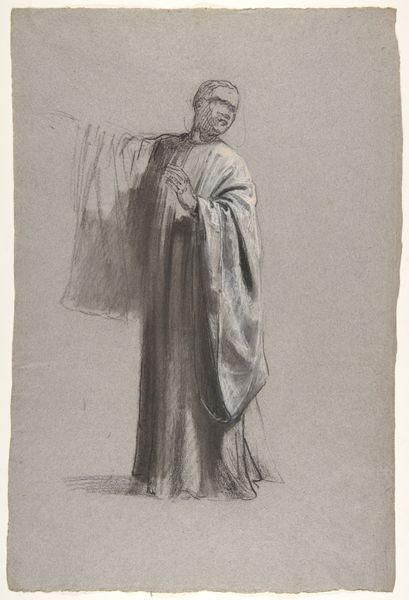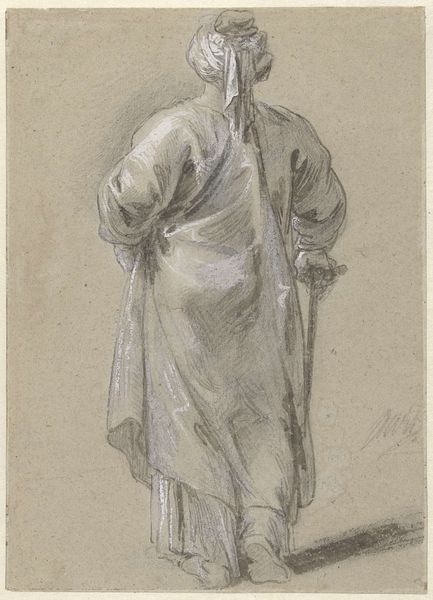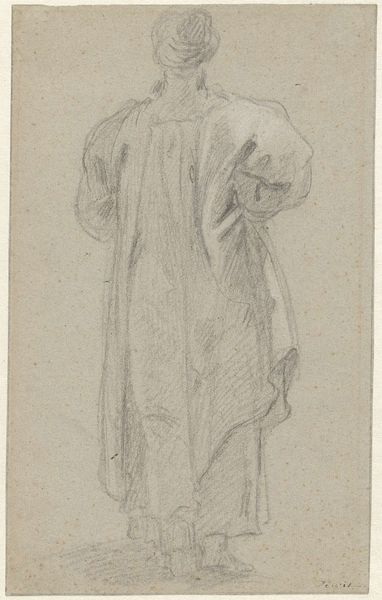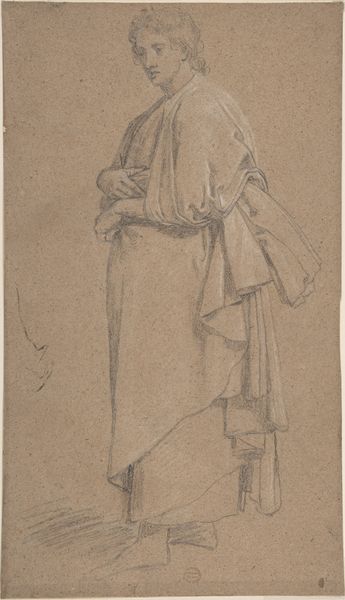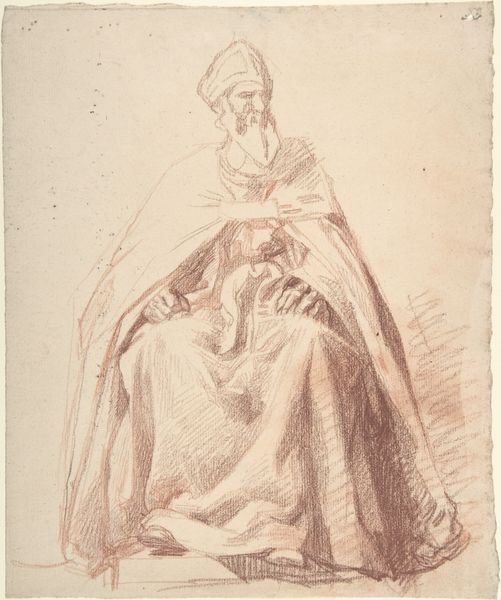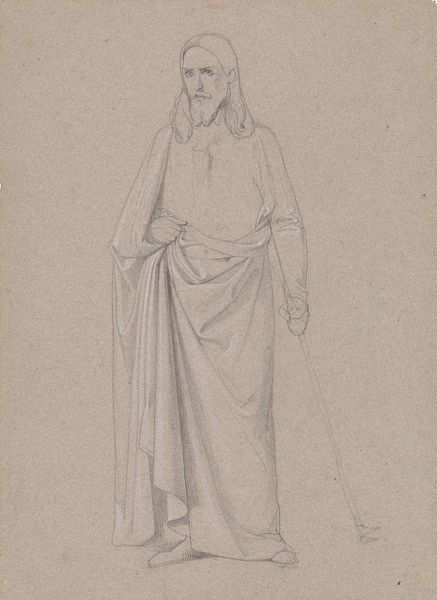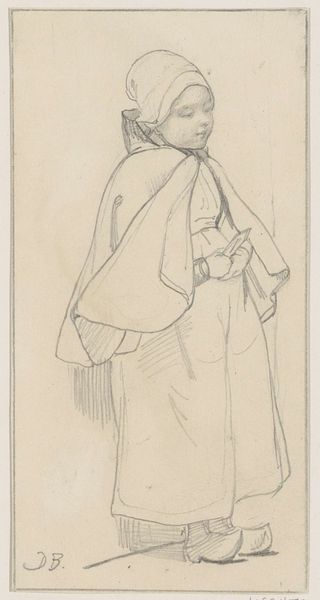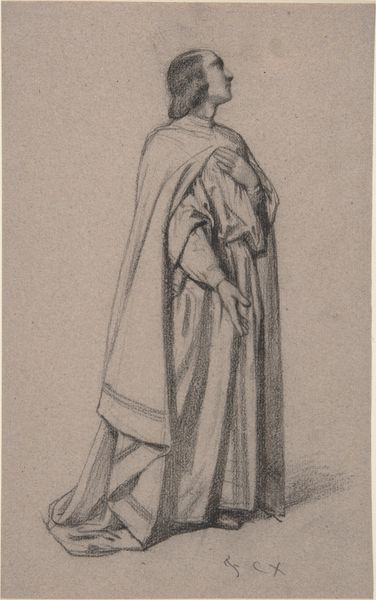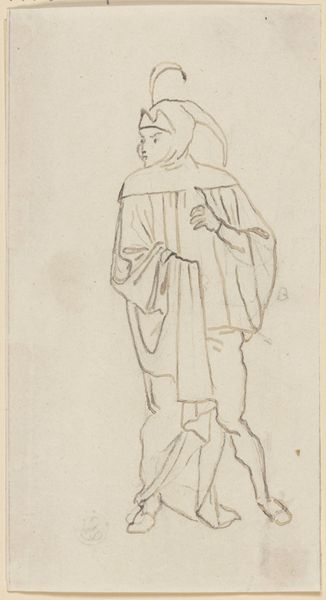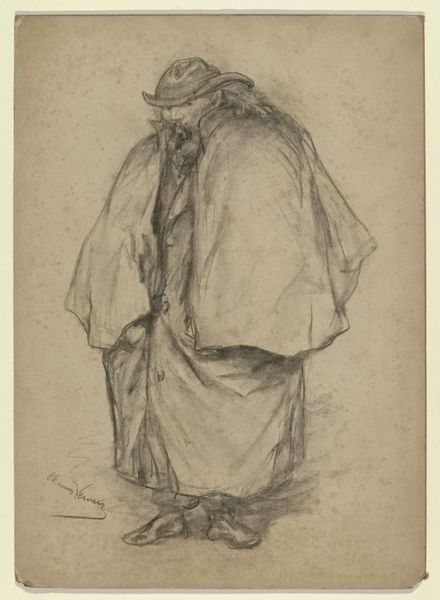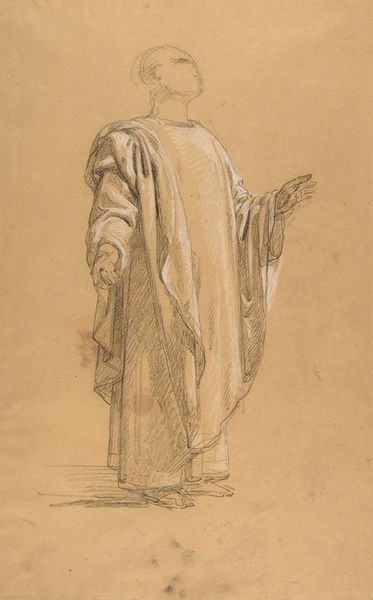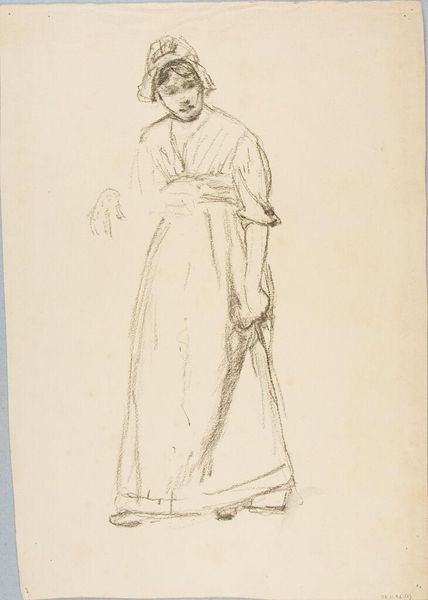
Dimensions: support: 387 x 281 mm
Copyright: © The estate of Sir William Rothenstein. All Rights Reserved 2010 / Bridgeman Art Library | CC-BY-NC-ND 4.0 DEED, Photo: Tate
Curator: This is Sir William Rothenstein's Study for the Attendant in ‘The Princess Badroulbadour’. Editor: There's a striking stillness to this sketch, a sense of quiet observation. Curator: Absolutely. Rothenstein, working around the turn of the century, was deeply engaged with issues of representation, particularly Orientalism and its portrayal of figures from the Middle East. Editor: The attire is clearly meant to signify a specific cultural identity, but the simplified form allows for a broader interpretation. The hat, especially, hints at status. Curator: Yes, the attendant figure becomes a vessel for exploring themes of service, power, and the gaze itself. It's crucial to understand the colonial context. Editor: The soft sepia lines also feel like a deliberate choice, evoking a sense of history and perhaps romanticizing the subject matter. Curator: It’s a work that encourages us to question the artist's own biases and the way Western art has historically depicted non-Western subjects. Editor: Indeed. It reminds us that even preliminary sketches can offer profound insights into the complex interplay of culture, identity, and artistic intention.
Comments
tate 8 months ago
⋮
http://www.tate.org.uk/art/artworks/rothenstein-study-for-the-attendant-in-the-princess-badroulbadour-t03682
Join the conversation
Join millions of artists and users on Artera today and experience the ultimate creative platform.
tate 8 months ago
⋮
This drawing is a study for The Princess Badroulbadour, 1908 (Tate Gallery N03953), a portrait of the artist's three children, John, Betty and Rachel, in fancy dress as characters from the 'Aladdin' story in The Arabian Nights. The drawing is of his son, but in the painting the pose with folded arms was used for one of his daughters. John was the Director of the Tate Gallery from 1938 to 1964. He is represented in a 1938 oil painting by his father, Portrait of Sir John Rothenstein C.B.E. (Tate Gallery T01869). The Tate Gallery also owns a second study for The Princess Badroulbadour (Tate Gallery T01248).Further reading:Robert Speaight, William Rothenstein: The Portrait of an Artist in his Time, London 1962, pp.225, 325Terry RiggsJanuary 1998
